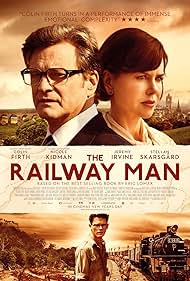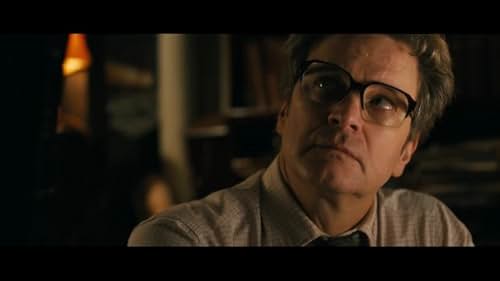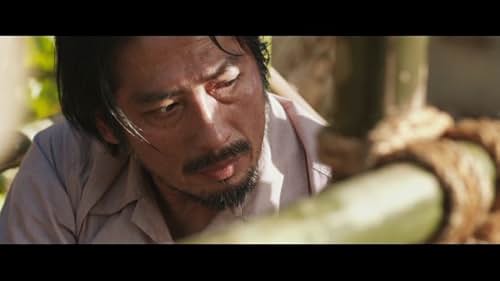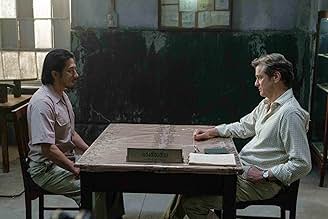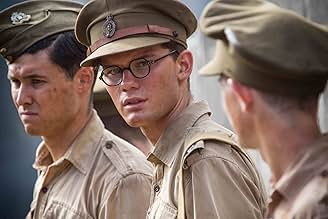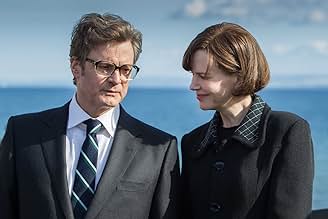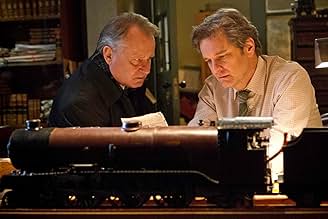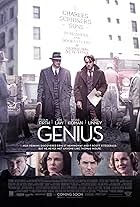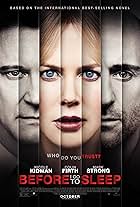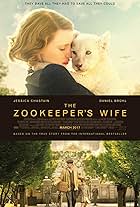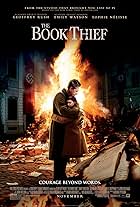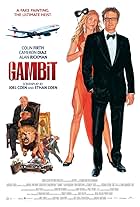A former British Army officer, who was tortured as a prisoner of war at a Japanese labor camp during World War II, discovers that the man responsible for much of his treatment is still alive... Read allA former British Army officer, who was tortured as a prisoner of war at a Japanese labor camp during World War II, discovers that the man responsible for much of his treatment is still alive and sets out to confront him.A former British Army officer, who was tortured as a prisoner of war at a Japanese labor camp during World War II, discovers that the man responsible for much of his treatment is still alive and sets out to confront him.
- Awards
- 7 wins & 20 nominations
- Director
- Writers
- All cast & crew
- Production, box office & more at IMDbPro
Storyline
Did you know
- TriviaBridge where old Eric standing at the end of the movie is the famous Bridge on the River Kwai in Thailand.
- GoofsAfter the surrender of British forces in Singapore, the Union Flag is lowered, and the Nisshoki, or Hinomaru (red disk on a white field) is hoisted in its stead. However, as Singapore was being occupied by the Japanese military, and not, at this point, yet a part of the Japanese empire, the flag should have been the Kyokujitsu-ki, or 'Rising Sun' flag. The flags shown later, hanging from military vehicles, also Nisshoki, are correct, as Thailand had at this point been effectively annexed, and was now part of the Japanese Empire. The Thai-Japanese alliance was signed on December 21st, 1941.
- Quotes
[last lines]
Eric: [handing him a letter] Dear Mr. Nagase, the war has been over for many years. I have suffered much, but I know you have suffered, too. And you have been most courageous, and brave in working for reconciliation. While I cannot forget what happened in Kanchanaburi, I assure you of my total forgiveness. Sometime the hating has to stop.
- ConnectionsFeatured in The Making of 'The Railway Man' (2013)
- SoundtracksIntroduction (Prelude) from Gadfly Suite
Performed by Ukraine National Symphony Orchestra and Theodore Kuchar (Conductor)
Composed by Dmitri Shostakovich (as D. Shostakovich)
Published by Native Tongue Publishing
Licensed Courtesy of Select Audio Visual Distribution on behalf of Naxos
Yet the film has several irritating shortcomings. The title character, Eric, was 61 at the time of the scenes set in 1980. Good as he is, Colin Firth is visibly too young. Perhaps it shouldn't matter, given the power of his performance, but it gets in the way if you try to make sense of the time lapses.
The very down to earth portrayal of Eric's lonely life is immensely touching, as in the scene where his new love Patti wants to scrub clean the cooking pot in his grubby bachelor kitchen. But such practical matter of fact detail inevitably invites down to earth speculation such as "Where does the characters' money come from?" This tiresome little problem hardly matters in more fantastical Hollywood sagas where everyone is filthy rich or in possession of superpowers. Eric is shown to drive a Triumph 2000, a car typically owned by the affluent middle classes of that time. (I have not seen one for years. The Triumph marque disappeared long ago along with much of the British car industry. The equivalent British middle classes now drive BMWs, Mercedes and Audis). This fine car and his neglected house are the only signs that he had a successful and productive working life between 1945 and 1980.
His tormented friend at the veterans club notes how the survivors of the 1940s horrors are now bank clerks, teachers, engineers, retired people; honest productive citizens, whose unsung post war endurance is as admirable as their war time survival. (One of my teachers around 1969 had been a Prisoner of War at Changi Prison in Singapore, but you would never have heard it from him.) Presumably many of these gentle heroes were married, as was Eric. But his failed post-war marriage and two children are unmentioned in the movie. As are Patti's three children. Somehow, despite a failed marriage, she has the cash to tour Britain. The fact that she had been married is barely hinted at (she describes herself as single again). The fact that the real Patti lived in Canada for many years is unmentioned.
Even a passing mention of the characters' histories could have considerably enriched the film. As it stands, it feels as if they were dropped into the story from Mars.
In his book "Hollywood vs America", the critic Michael Medved noted the inviolable barrier between Church and Studio in most Hollywood films. The same deep rooted reluctance to mention spiritual matters, even when they are relevant to the characters, is very evident in this film. The only sign of the prisoners' religious leanings in this real Valley of the Shadow of Death is the recitation of a Psalm in one scene. Eric's deep Christian faith helped him through the nightmare and perhaps lead to his forgiveness of his tormentor decades later. He carried a Bible for decades during and after his imprisonment until it was utterly worn.
You can get the background story from the book. For the price of a cinema ticket, it is much better value for money. You get at least a limited sense of the vanished Britain of the 1920s and 1930s when Eric grew up. The lovingly described details of the social and industrial environment that formed him make sense of how this man came to be a survivor. A new preface in the movie tie-in edition describes how Eric did not want to see the finished film; he died before it was released. If he had seen it, he might have pointed out, in the most polite manner, how much of the really important story had been left out.
- How long is The Railway Man?Powered by Alexa
Details
- Release date
- Countries of origin
- Official sites
- Languages
- Also known as
- Phía Sau Cuộc Chiến
- Filming locations
- Production companies
- See more company credits at IMDbPro
Box office
- Budget
- $18,000,000 (estimated)
- Gross US & Canada
- $4,438,438
- Opening weekend US & Canada
- $61,845
- Apr 13, 2014
- Gross worldwide
- $24,174,885
- Runtime1 hour 56 minutes
- Color
- Sound mix
- Aspect ratio
- 2.35 : 1
Contribute to this page

